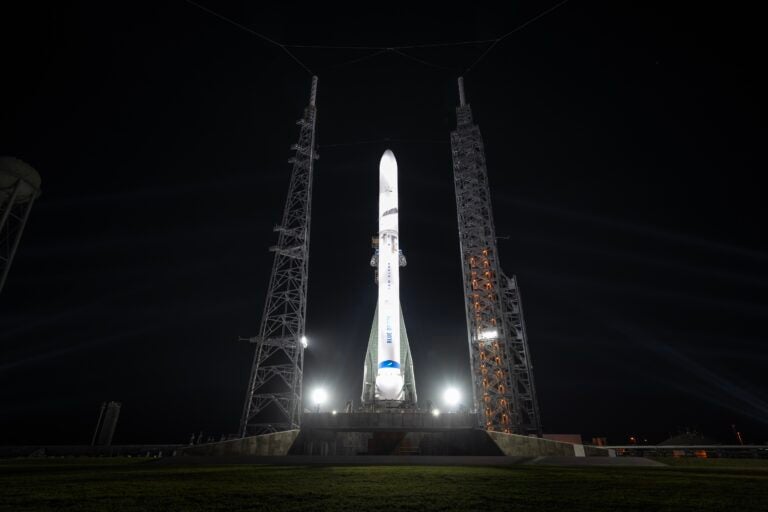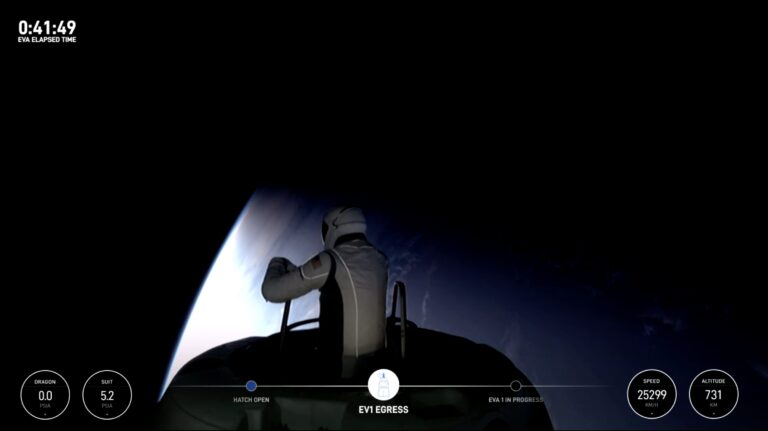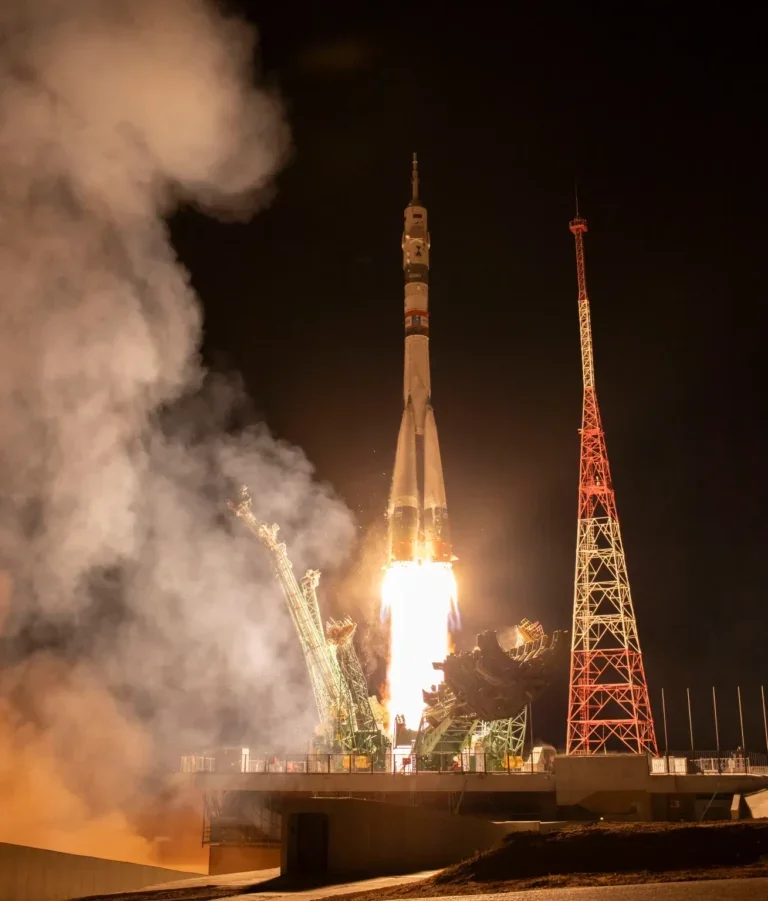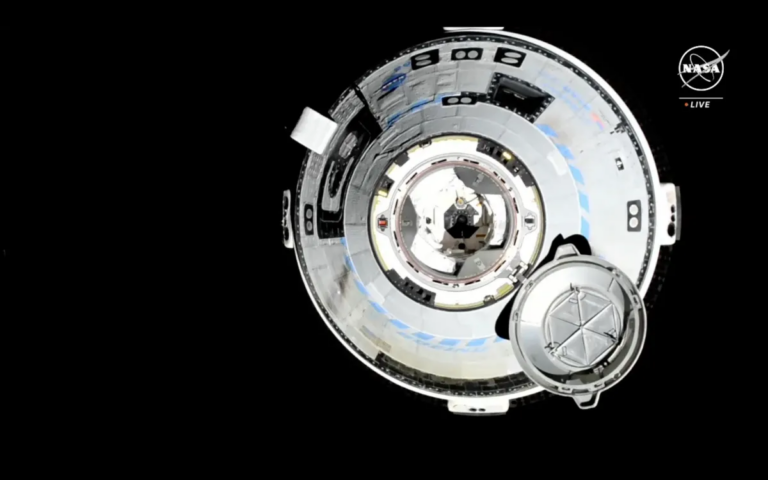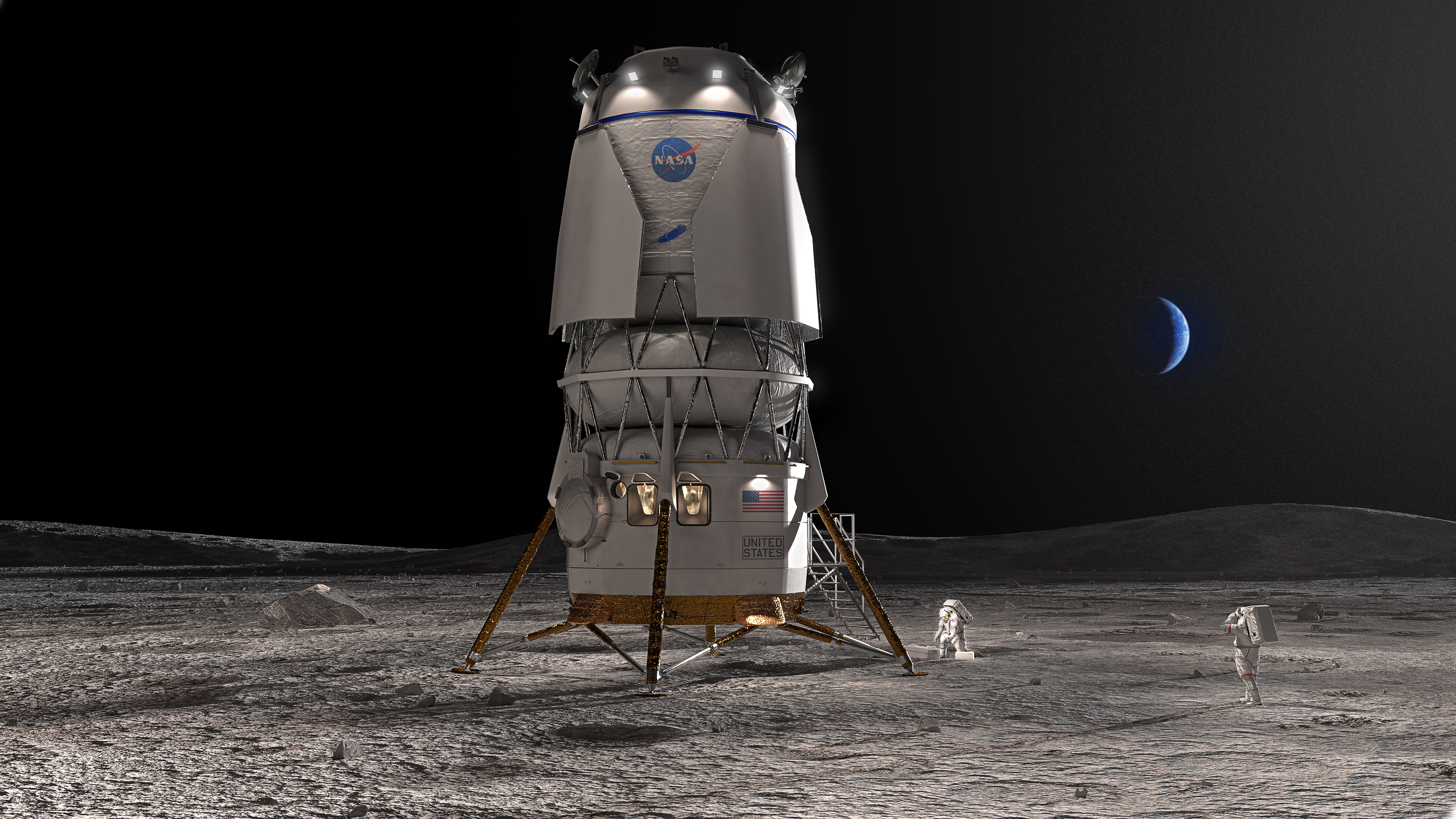
“Once in a Blue Moon” may not apply to lunar exploration, it seems: NASA announced May 19 that Blue Origin’s Blue Moon will be the second lunar lander design for the Artemis program.
Intended for the crewed mission Artemis V, launching in 2029, Blue Moon will provide an alternative to Space X’s Starship lander, which is set for earlier missions including the first return of humans to the lunar surface with Artemis III in 2025, as well as follow-on Artemis IV. Artemis V is seen as the mission that will move NASA into a yearly cadence of lunar landings.
NASA originally selected SpaceX’s landing design in 2021, after receiving only enough Congressional appropriations to award a single landing design contract at the time. Blue Origin protested and sued NASA, who later opened a call for a second design. The agency received bids from Dynetics and Blue Origin’s National Team, which includes partners Lockheed Martin, Draper, Boeing, Astrobotic, and Honeybee Robotics.
The rationale for choosing Blue Origin over Dynetics will be revealed in a later document, officials said at the press conference announcing the selection.
To the Moon
The 52-foot-high (16 meters) Blue Moon can be loaded with more than 50 tons (45 metric tons) of fuel and features an upper deck communications array, hydrogen tank, oxygen tank, solar array, docking adaptor, and room for four astronauts.
The fixed-price contract is for $3.4 billion, with Blue Origin contributing more than that amount out of its own funding: a contribution NASA Administrator Bill Nelson called “quite significant.” Both Blue Origin and SpaceX have been “putting a lot of skin in the game,” he added.
Blue Moon is not much like the Apollo Lunar Module. It is intended to be launched on the not-as-yet-flown New Glenn rocket, also built by Blue Origin. It will be fueled in Earth orbit, travel to the Moon and dock with the orbiting lunar space station Gateway (basic components of which are to be assembled before Artemis V), receive more fuel, then land on the Moon. Once the surface mission is complete, Blue Moon would return to lunar orbit to await refueling and reuse on future missions.
Blue Origin’s manager for the lunar effort, John Couluris, said during the press conference that smaller test vehicles will prove out components of Blue Moon and their technology “will migrate into these landers.” There will be an uncrewed Blue Moon lander a year prior to Artemis V to assess and reduce risks; Couluris left open the possibility that the uncrewed lander could be reused. There will not be a crewed test flight in Earth orbit, he tells Astronomy.
Blue Origin is focusing on no-boil-off storage and transfer of hydrogen fuel. Hydrogen is notoriously leaky (as demonstrated by the Space Launch System’s core stage) and new technology for in-space transfer and storage is required. “We’re doing quite well,” Couluris said. If it works, and if water can be extracted from lunar ice and cracked into hydrogen and oxygen, then the system would be sustainable.
One additional — yet currently overlooked — aspect of this approach is a second vehicle, a cislunar transporter vehicle to ferry such fuel. Blue Origin wants to exceed NASA’s requirements, Couluris said, to do more with Blue Moon not only for NASA but possible commercial partners as well.
Sprit of competition
Nelson emphasized NASA’s desire for more than one landing system for future missions: “We want more competition. We want two landers. And that’s better. And that means you have reliability, you have backups.” Having Blue Moon and Starship available for lunar missions is intended to reduce costs as both companies vie for future landing spots and as they attract other customers, which can help bring down operational costs for NASA.
Lisa Watson-Morgan, manager of the Human Landing System Program at NASA’s Marshall Space Flight Center in Huntsville, Alabama, said of Blue Origin’s team: “We definitely have confidence in them and their approach.” She added that teams were ready to get started soon.
The announcement comes at a time of some budget queasiness. Between next year and 2028, NASA is slated to spend more than $40 billion on Artemis. Two landings are scheduled in that time, but delays are almost inevitable, some say.
Additionally, skeptics wonder whether the expensive Space Launch System will ultimately survive if Space X’s reusable Starship safely comes on board and reduces cost. Yet Starship faces its own challenges: On its first launch it severely damaged its launch pad and blew up, additionally scattering debris and starting a wildfire on public land. In response, the Center for Biological Diversity is now suing the Federal Aviation Administration, contending inadequate oversight of SpaceX.
As well, the $4 billion lunar Gateway space station is not necessary for lunar landings — though it would be an important platform for science and logistics. It also features international components, making it harder to cancel if budgets run tight.
Artemis has enjoyed support across two administrations as well as in rare bipartisan fashion in Congress. That said, budgets can change and shrink, especially when cost-cutting measures come to the forefront of politicians’ agendas. Scientists fear less an outright program cancellation and more that Artemis will be resource-starved, at least in the near term, especially if the program becomes a centerpiece of the upcoming 2024 elections.
Nonetheless, Bill Nelson again underscored that the Moon is a stepping stone for Mars, though it is unclear what a sustained presence on the Moon will like as Artemis evolves. Only time will tell.




